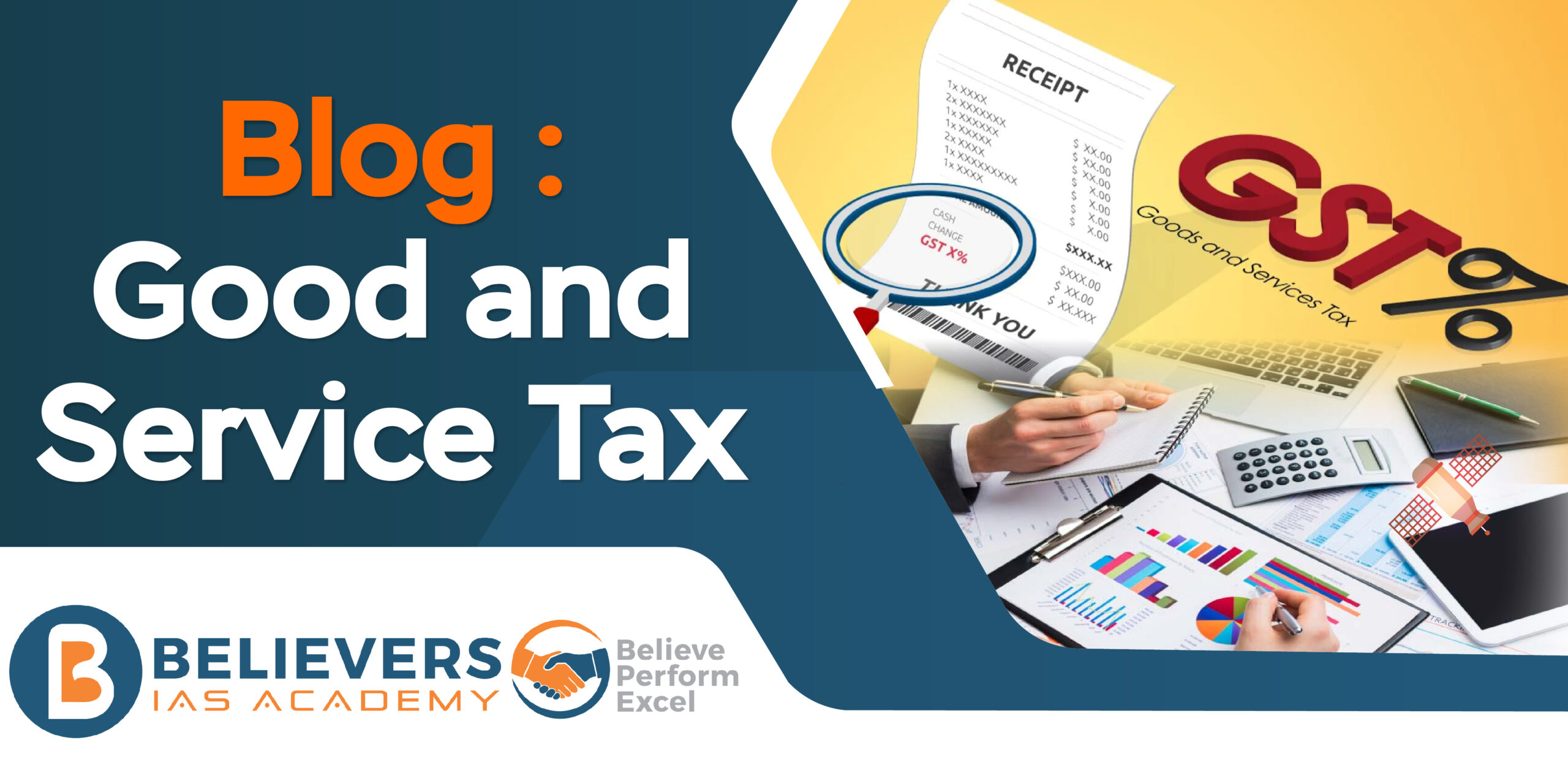Goods And Service Tax
GST stands for Goods and Services Tax in India. The Indian government implemented a comprehensive, destination-based indirect tax on July 1, 2017, to replace the existing intricate system of several indirect taxes imposed by the national and state governments.
GST, which applies to the provision of goods and services across all of India, aims to provide a streamlined and unified taxation structure. To stop the cascading impact of taxes and lessen the tax burden on consumers, it incorporates several central and state taxes, including excise duty, service tax, VAT, and other indirect taxes.
What are the features of GST?
- Single Tax: The GST streamlines the tax structure by replacing various indirect taxes, such as excise duty, service tax, VAT, etc., with a single tax.
- Destination-Based Tax: GST is a destination-based tax, which means that rather than at the place of origin, it is assessed and collected at the point of consumption. The consuming state keeps the tax income.
- Value Addition: Every step of the supply chain’s value addition is subject to GST. To prevent the “tax on tax” cascading effect, businesses can claim input tax credits on the taxes they paid on their purchases.
- Dual GST Structure: The GST system in some nations, such as India, is divided into two parts: a Central GST (CGST) imposed by the federal government and a State GST (SGST) imposed by the corresponding state governments.
- Threshold Exemption: Under normal circumstances, firms are not required to register for and collect GST if their sales fall below a certain amount. This benefits small enterprises and lessens the strain of compliance.
- Composition Scheme: GST frequently provides small firms with a lower turnover with a composition scheme, which enables them to pay a fixed proportion of their turnover as tax and eases compliance needs.
- Online portal and e-filing: To encourage digitalization, GST typically requires taxpayers to submit their tax returns and make payments online through a centralized GST portal.
- GSTIN (Goods and Services Tax Identification Number): Registered taxpayers are given a special GSTIN (Goods and Services Tax Identification Number) to keep track of their transactions and compliance.
- Input Tax Credit(ITC): A business’s overall tax obligation can be reduced by claiming an input tax credit (ITC) for the GST they spent on their purchases (input tax) against the GST they collected on their sales (output tax).
- Tax Slabs: GST may have various tax slabs with varied rates such as 0%, 5%, 12%, 18%, and 28% for various types of goods and services (rates may vary from country to country).
What is the legislative background behind GST?
Early in the new millennium, plans were made in India to replace the convoluted indirect tax system with a comprehensive Goods and Services Tax (GST). However, it required years of deliberation and compromise between the federal and state governments to reach an agreement and create a workable GST system. The following are the major turning points in India’s legislative history regarding the GST:
- Conceptualization and Introduction: P. Chidambaram, the then-finance minister, initially discussed the GST concept in the Budget Speech for the fiscal year 2006–2007. It was suggested to combine different indirect taxes into a single comprehensive tax.
- Empowered Committee of State Finance Ministers (EC): To create and implement the GST in India, an Empowered Committee of State Finance Ministers was established in 2007. The group, led by West Bengal’s Amit Mitra, Finance Minister, was instrumental in creating the GST framework.
- First Discussion Paper: The Empowered Committee published the First Discussion Paper on GST in 2009, detailing the fundamental concepts and framework of the proposed tax.
- CA Bill: The 2014 Constitution (122nd Amendment) Bill To change the Constitution to allow for the implementation of GST, the Central Government tabled the Constitution (122nd Amendment) Bill in Parliament in 2014. At least two-thirds of the members of each house of Parliament and more than half of the state legislatures had to approve the measure for it to become law.
- Passage of the Bill: The Constitution (122nd Amendment) Bill, often known as the GST Bill, was approved by both chambers of Parliament in 2016 following multiple rounds of discussion and modifications.
- State ratification: The legislation was referred to state legislatures for approval once it was approved by Parliament. The measure was approved by the President after being adopted by more than half of the Indian states and became the Constitution (101st Amendment) Act, of 2016.
- Creation of the GST Council: In September 2016, with the passage of the Constitution Amendment Act, the GST Council was created. The council, a federal body made up of officials from the federal and state governments, is in charge of recommending changes to the GST’s rules, regulations, and tax rates.
- Passage of CGST and IGST Bills: The Central Goods and Services Tax (CGST) and Integrated Goods and Services Tax (IGST) Acts, which together provide the legislative framework for GST, were subsequently passed by the Central Government and several state governments.
- GST implementation: The GST was finally implemented in India on July 1, 2017, combining multiple central and state levies into a unified indirect tax structure.
What is GST Council?
Following the implementation of the Goods and Services Tax (GST) in India, the GST Council was established as a constitutional body under Article 279A of the Indian Constitution. It is a federal organization that is essential to the management and decision-making of several GST system components. The Council is tasked with providing recommendations on important GST-related policy issues, tax rates, exemptions, and procedural changes.
- Composition: The Union Finance Minister of India chairs the GST Council, which also has the Union State Minister of Finance and Ministers in charge of Finance or Taxation from every Indian state and union territory as members.
- Making Decisions: The Council has the authority to decide on all issues about the GST, including the tax rates for goods and services, how the tax income is split between the federal and state governments and any necessary procedural or administrative adjustments.
- Voting Procedure: The GST Council uses voting to make decisions. One-third of the votes are held by the Central Government, and two-thirds are held by all the states together. Any decision needs the backing of at least three-fourths of the members to be adopted.
- Guidelines and Recommendations: The Council advises the Union and State Governments on all facets of the GST. Although these suggestions are not obligated, they are typically accepted and carried out in reality.
- Resolution of Disputes: The GST Council is in charge of settling conflicts resulting from the implementation of the GST between the federal government and state governments or between the states.
- GST Law Amendments: Based on changing needs and input from stakeholders, the Council may propose modifications to the GST laws and regulations.
- Changes to GST Rates: The GST Council has the power to change the tax rates on goods and services based on the state of the economy and the need for additional income.
What are the advantages of GST?
- Simplified Tax Structure: GST replaced an intricate and multi-layered indirect tax system with a single, unified tax, simplifying the tax structure. It streamlined the tax system, making it simpler for businesses to comprehend and adhere to tax laws.
- Elimination of Tax Cascading: Tax cascading is eliminated by the GST, which enables companies to claim an input tax credit for the taxes they paid on purchases. A more effective tax system results from the elimination of the cascading effect of taxes (tax on tax) at different points along the supply chain.
- Common National Market: The GST established a common national market for goods and services, facilitating smooth interstate commerce and corporate operations. It has lessened the burden of compliance for companies conducting interstate business.
- Reduced Tax Evasion: The GST is a technology-driven tax system that mandates electronic return filing for enterprises. This has improved tax compliance by increasing openness and reducing opportunities for tax evasion.
- Boost to GDP Growth: By fostering economic efficiency and ease of doing business, the GST’s introduction was anticipated to have a favourable effect on India’s Gross Domestic Product (GDP) growth.
- Lower Tax Burden on Consumers: Consumers now face a lessened overall tax burden as a result of the GST’s replacement of several indirect taxes, which could result in lower prices for products and services.
What are the challenges of GST?
- Impact on Small Businesses: Due to the complexity of compliance requirements and technological hurdles, small businesses initially had trouble adjusting to the new tax system.
- Reconciliation of Input Tax Credit Claims: It has been difficult to reconcile input tax credit claims throughout the supply chain, which has raised the likelihood of tax fraud and leakage.
- Sector-Specific Problems: The early exclusion of some industries from the GST, such as real estate and petroleum, caused issues with input tax credits and tax treatment.
- Interstate Transactions: Careful consideration of the place of supply regulations and determination of the applicable tax are required to implement the GST for interstate transactions.
- Educating Taxpayers: It has been important to inform and educate taxpayers about the complexities of the GST, particularly for small enterprises and consumers.




